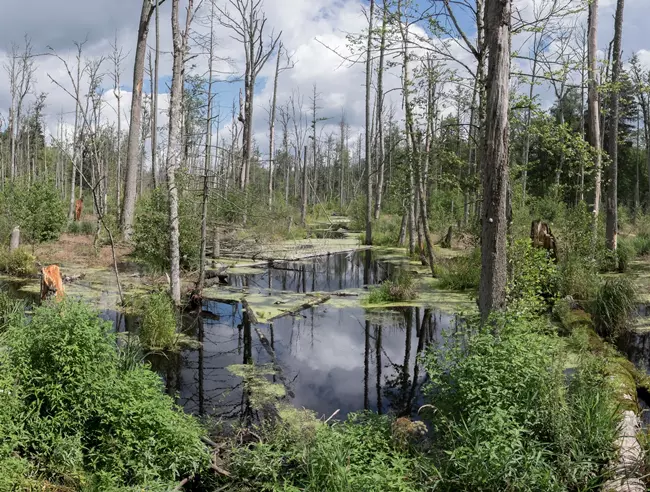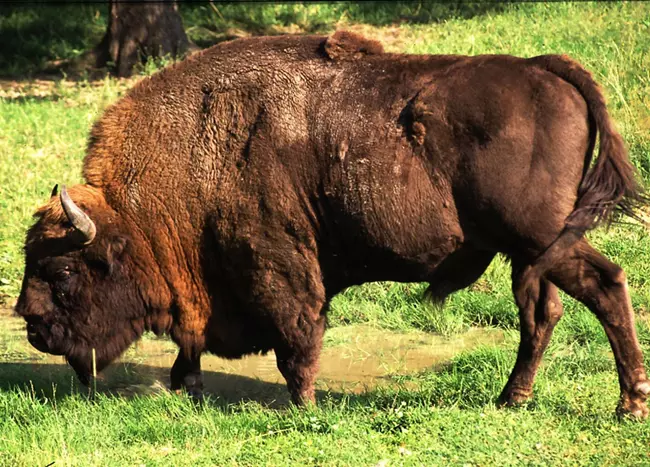The last virgin forest of Europe: the majestic Białowieża Forest
Before of the settlement of humans the most of the territory of North-eastern Europe was covered by ancient forests that have unfolded for thousands of kilometres on the great plains of the continent. These forests are almost lost for today and only survived in tiny and lonely hidden spots in mountain areas for example in the sides of the Carpathian Mountains. There is only one exception to this, the Białowieża Forest in the border area between Poland and Belorussia.
Source: pixabay.com / Inactive account – ID 3005398; modified: Richárd Seres-Nagy; Licenc: Pixabay License (Free for commercial use; No attribution required); License link: https://pixabay.com/service/license/; Link: https://pixabay.com/photos/marsh-bialowieza-forest-forest-1610576/
When we are talking about a virgin forest, we mean that these types of forests are usually extensive, free from any regular human activities, and at last they exist for a long time ago. The best-known virgin forests are the tropic jungles, but we can meet with these noble backwoods in the other parts of the globe, too. Their appearance may be very different because we find different species of woods, bushes, herbaceous plants and fungi, and we can hear diverse bird whistles in different places of the world.
However, there are some attributions what are the same in every ancient forests. There are lots of old aged trees and some of them are great in their size, decaying trunks are resting on the ground, the greenery looks diverse and there are young saplings in the opened places between the old ones. These old forests, which survived the passing centuries, with their big spaces inside of them and signs of life and death together, give really deep thoughts for anyone who visits them.
Only on the third part of the original territory of the woodlands which formed after the Ice Age in Europe are covered by forest today, and only one percent of these forests are virgin forests. The protection of the old forest resources was not a priority in Europe for a long time, and some of the primary forests were devastated when the nature conservationists were working within institutional frameworks since decades.
The Białowieża National Park is the first national park of Poland and one of the oldest in whole Europe. It was declared a protected area in 1921 and after that in 1932 the Białowieża forest was titled as a national park. The natural environment has suffered a lot by the destructions of the Second World War, which damage has been restored in 1947 and the national park wears its name since that time.
The area of the national park has doubled in 1996, and now the forest covers one-sixth of the territory of Poland. 5,726 hectares, from the whole territory of 10,517 hectares, are strictly protected by the state and the other parts of the area, which belongs to the state forestry, is also titled like a buffer zone.
From a cultural historical point of view the most interesting parts of Białowieża are the buildings of the complex, which were built for is hunter accommodation for the Russian tsar, and the English park with its own 50 hectare territory. The oldest building of the area is the chateau which was built of wood in 1845, and the oldest monument is the obelisk for memory of the hunting of III. Augustine of Saxony in 1752.
The mixture of the huge oak and ash trees provides a peaceful home for more than 20,000 animal species including the heaviest mammal of the continent, the majestic European bison, inside of the last preserved virgin forest of Europe. The European bison, this amazing creature had almost gone extinct in the 20th century due to overhunting. The hunting of this noble prey in Białowieża started in the 14th century when the Polish king has introduced a limited hunting license in the area.
In the 15th century the forest (has) gave place to hunting events regularly and it became the favourite hunting ground of the Polish King of that time, Władysław Jagiełło. The king has built a graceful wood castle, what has the colour of white on its walls, in the centre of the forest, and for a fact the name of this amazing forest is coming from this white castle.
When Sigismund the first became the Polish king, he banned the hunting in the forest. In this way the area could rest until the end of the 17th century, when people in some local villages started tom mine iron ore and produce tar.
At the end of the 18th century, right after the first splitting of Poland, I. Paul Russian tsar abolished all of the protecting provisions of the area, and the bison hunting started to increase again in Białowieża. During the following 15 years the bison population has decreased from 500 animals to just 200 individuals. In the next one hundred years every time when the governing power has changed the titles of the forest also changed from hunting ground to protected area and then back.
The last living wild European bison was hunted down during a royal hunting event in Białowieża in the year of 1921 with hundreds of deer and boars. After the fall of the Russian tsars the Polish state regained the control of the forest, and thereafter of the Polish-Soviet war the Białowieża became a National Reserve Area.
At this time there were only 54 living European bisons in the whole world, but none in the Białowieża. In the year of 1929 the Polish state purchased 4 buffaloes from different zoos, and in the following ten years the numbers of the animals increased to sixteen.
European wisent photographed in Białowieża, Poland. (Source: By Henryk Kotowski at English Wikipedia - Own work, CC BY-SA 3.0, https://commons.wikimedia.org/w/index.php?curid=109368; License link: https://creativecommons.org/licenses/by-sa/3.0/)
Everything seemed to work perfectly: there was no more hunting or other human activity or just any destructive factor in the Białowieża, and finally the majestic buffaloes were living in peace in the deep of the forest again. Then suddenly the Second World War had started.
The forests became a home of the Polish and Soviet partisans against the German army and there were many armed conflicts in the Białowieża forest. After the war the area were halved between Poland and Belorussia. The Belorussian part of the area came under state administration, but Poland opened the Białowieża National Park in 1947.
After the disintegration of the Soviet Union, the forest posted on the Unesco World Heritage List in 1992. Nowadays the two countries care for the forest of Białowieża together, and it is one of the most amazing and beautiful place of the continent with almost one thousand buffalos inside. For a fact, the Białowieża National Park is from a 6 hours long travel with car from Warsaw, so in case you are planning a holyiday in Poland, do not forget to visit this unique forest.
Donát Novák
February 2020

